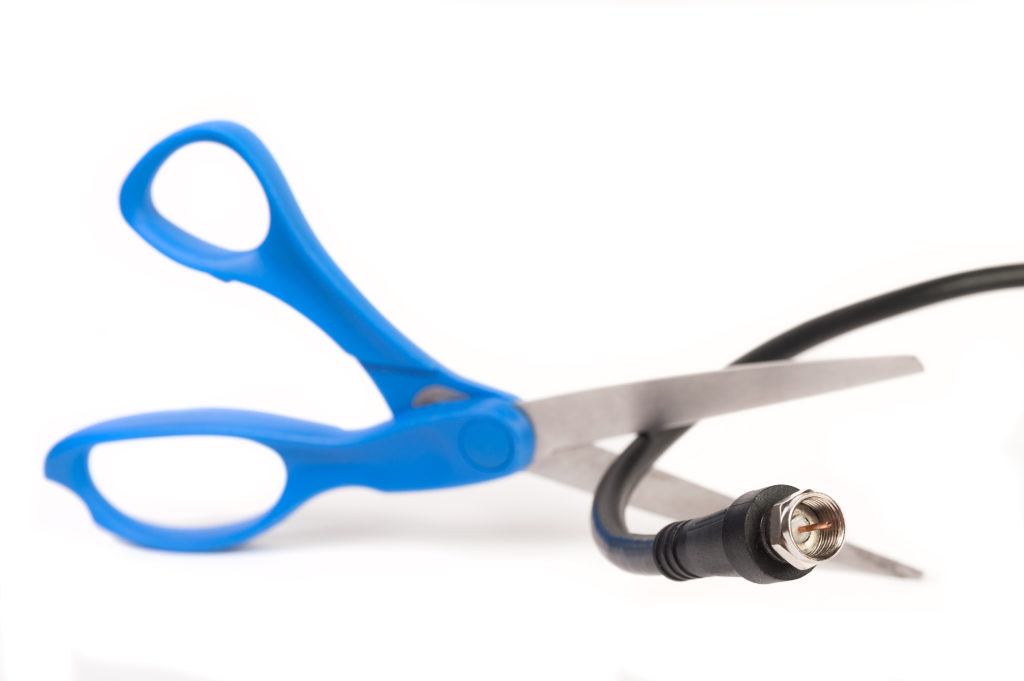
Luke Bouma runs CordCuttersNews.com which covers all things streaming media and over the air TV. He has also written for Refinery29, Roku, Mohu Antennas, and Ting as an expert commentator on the topic of cord cutting.
The act of cutting the cord and cancelling pay television is a lesson in content access, personalization, distribution, and usage. And as we learned in last year's Techsurvey, video on-demand has a relationship to audio on-demand, better known as podcasts. Understanding who's cutting the cord – and why – speaks volumes about how media consumption patterns are changing and why radio operators need to take note.
In Techsurvey13 – which just went into the field – we're asking about cord cutting for the first time. We look forward to learning how the results can better inform radio broadcasters about the changing nature of the audience and how they interact with their content.

2016 was a tipping point in how Americans watched TV, as cord cutting took off and content providers rushed to offer services attractive to cord cutters. What does this mean for radio executives, and how can they take advantage of the cord cutting movement?
Here are 6 things everyone needs to know about Cord Cutting to benefit from these new market changes.
1. What is cord cutting and why do people cut the cord?
The simplest way to explain cord cutting is that people are cutting the cord of traditional pay-tv, like cable TV, in favor of streaming their content and/or watching it with an antenna over-the-air.
There are numerous benefits to cutting the cord. For many, the first benefit is savings. According to the Wall Street Journal, the average cord cutter will save $104 every month, adding up to a sum of $1,248 per year. If a viewer cuts the cord when they are 30 then, by the time they are 60, they will have saved $37,440 — assuming the cost of cable TV does not continue to increase.
The second benefit for cord cutters is the ability to avoid commercials. Skipping commercials may not seem like a big deal, but, according to the Washington Post, the average American watches approximately 160 hours of television commercials every year. By choosing commercial-free services like Netflix, Amazon Video, or ad-free Hulu, cord cutters can save about six days worth of time every year just by ditching cable TV.
American media consumption habits have changed. TV executives are seeing a change that radio executives faced not that long ago; consumers want more control over what they see and what they pay for their content.
2. How many Cord Cutters are there?
According to The Wall Street Journal there are 20.8 million cord cutters in the United States who account for about 17% of US households. The Wall Street Journal also predicts that by 2018, 21% of American households will be cord cutters. However, Fortune Magazine’s cord cutting figures state that by the end of 2016, 26.7 million households, or 21.9% of all U.S. households will have cut the cord.
This opens up a rapidly growing market as an estimated 20,000 Americans per day drop their pay-tv subscription, or downgrade their channel packages to a more basic service. As people downgrade their services, or just outright cancel their traditional pay-tv, they are looking for information about cord cutting.

3. Most Americans are already streaming content.
Even if consumers still have a cable TV subscription, it is very likely they are already streaming content online. Currently, more than 47 million Americans subscribe to Netflix and half of all American households subscribe to some type of services according to Nielsen statistics. Additionally, a Consumers Reports study concluded that 45% of all American households now use some type of streaming service.
Many consider these subscribers as halfway to becoming cord cutters. Not only are they paying $100 a month on average for pay TV, they are also paying for Netflix and Amazon Prime, a cost that can add about $240 a year on top of the $1,200 a year they pay for cable TV.
With over 90 million American households still subscribing to traditional pay TV providers, this leaves a huge amount of growth for the cord cutting market.
4. Cord cutting is not a one-for-one replacement of cable TV
Consumers who say they cannot save money by cord cutting are often subscribing to five or more services. It is not uncommon for them to have very pricey packages of PlayStation Vue, CBS All Access, Netflix, Hulu, HBO Now, and Amazon Prime.
This is a major mistake new cord cutters often make. They try to make cord cutting a complete replacement of cable. Cord cutting is a great way to save money and still watch content, once the consumer recognizes they need to change their understanding of TV viewing.
If all they want is a few particular shows, they have two different ways to view them. First, they could buy a season pass for those shows on Amazon or iTunes, which is far less expensive than paying a monthly cable fee for those shows (as well as many other programs they are not interested in viewing).
Second, they could choose to only subscribe to a particular package, or service, when the show is live. If they want HBO just for Game of Thrones, they can subscribe to HBO Now only when Game of Thrones is live and cancel it for the rest of the season.
Cable cutters understand they have choices. They no longer need to pay year-around for a station they are only viewing for a few months. Cord cutting gives them the freedom to add and drop services at any time.
5. Cord cutters can always go back to cable TV.
Cord cutting is a win-win for consumers. They have nothing to lose if they try cord cutting and decide it does not work for them. Their cable company will be happy to welcome them back. Yet, for most consumers, the attraction of saving $1,248 per year is well worth the effort to make cable cutting a success.
6. Millennials are cutting the cord.
Finally, A recent survey by TCL that highly desirable Millennials are 2.5 more apt to have cancelled cable than their Boomer parents.
While radio and television used to reach about the same number of young adults between the ages of 18 and 34, “nearly a quarter [of millennials] have no use for it [television] in any given week,” according to The New York Times.
The cord-cutting phenomenon is flourishing and awareness of its impact is significant — especially for radio executives. The quest for media personalization and the break from the traditional have overtones to other media, including radio. Providing value and a great user experience – without commercials – are big parts of the cord cutting mindset.
In our new Techsurvey, we've included a first-ever cord cutting question. And we're especially interested to see in which demographic groups and discreet formats cord cutting has become prevalent.
Cord cutting started as a novelty, became a phenomenon, and is now a movement.
Thanks to Seth Resler for putting together this week's “Guest List.”
Learn more about your audience by signing up for Techsurvey13. Info here.
- Radio's Perception vs. Reality Problem - April 29, 2024
- “The One Thing” About Techsurvey 2024 - April 26, 2024
- Can AI Create “New” Classic Rock Songs? - April 25, 2024






Leave a Reply